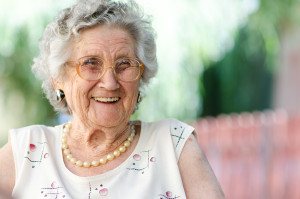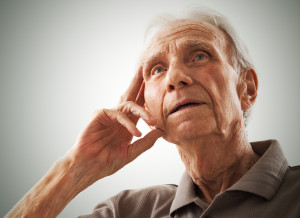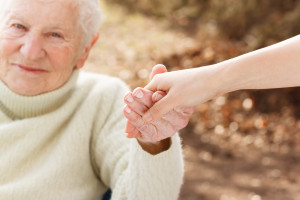 Contributor: Rachael Mattice is the Content Manager for Sovereign Health Group, an addiction, mental health and dual diagnosis treatment provider. Rachael received her bachelor’s degree in journalism and mass communication from Purdue University.
Contributor: Rachael Mattice is the Content Manager for Sovereign Health Group, an addiction, mental health and dual diagnosis treatment provider. Rachael received her bachelor’s degree in journalism and mass communication from Purdue University.
The elderly population represents the fastest growing segment of the world’s population . Chronic pain in the elderly is not a normal aging process and is considered pathological.
Treating chronic pain in the elderly is a challenge for clinicians because a large number of the elderly suffer from chronic pain, and their bodies react differently to pain medication than younger bodies. Elder care can include a number of different settings, such as independent living, assisted living and long-term care facilities, as well as palliative care services.
A Challenge
The prevalence of chronic pain in the community-dwelling elderly population is 25 to 50 percent and affects 70 percent of nursing home residents, according to a lecture2 by B.A. Ferrell presented at the American Geriatrics Society Annual Scientific Meeting in May 2003. The American Geriatrics Society states that up to 80 percent of long-term nursing home residents live with substantial pain3 .
Yet, pain among older adults is largely undertreated, in fact 25 percent of elderly individuals experiencing pain on a daily basis received no treatment for their pain4 . Lack of pain treatment can lead to serious health consequences, such as depression, anxiety, decreased mobility, social isolation, poor sleep and related health risks.
Why Pain Goes Untreated
 Frequently, older people don’t report their pain, because they don’t know that it can be treated or they believe it will lead to expensive tests or more medications. Also, conditions, such as vision or hearing loss or dementia, can limit communication about pain.
Frequently, older people don’t report their pain, because they don’t know that it can be treated or they believe it will lead to expensive tests or more medications. Also, conditions, such as vision or hearing loss or dementia, can limit communication about pain.
Clinicians are hesitant to treat pain in the elderly because their digestive and excretory systems are more fragile than when they were younger, which leads to a fear of the potential for narcotic overdose.
As a result, this population who needs to care more than any other population, often is forced to live with chronic pain. The most common sources for chronic pain include joint pain, such as arthritis, and neuropathic pain.
Handle Medications with Caution
Polypharmacy, defined as the use of four or more medications by one patient, can lead to accidental narcotic overdose in the elderly and often results in mixing up medications and taking them at the wrong time. Because they often have multiple medical conditions, polypharmacy is most common in the elderly, affecting about 40 to 50 percent of seniors5 .
Because the elderly have a slower gastrointestinal, liver and kidney metabolism, narcotics remain in their body for a longer time, causing increased risk for drug toxicity and overdose. Because of these changes in drug metabolism, narcotics should be started at very low doses, about 25 to 50 percent of the dose given to younger patients.
Consequences of Opioid Medications
 Opioid medications can also cause confusion and delirium in the elderly, which can lead to falls that cause fractures and other injuries.
Opioid medications can also cause confusion and delirium in the elderly, which can lead to falls that cause fractures and other injuries.
The typical opioid side effects include constipation, nausea, vomiting and respiratory depression, which are more prominent in the elderly because of the liver and kidneys’ decreased ability to clear drugs from the body, causing a buildup of these opioids.
Opioid pain meds can easily get mixed up with other medications, such as blood pressure medication leading to multiple unwanted side effects. Low-dose oral opioids can be used for moderate to severe chronic pain in the elderly who are experiencing a diminished quality of life.
Taking With Caution
Non-steroidal anti-inflammatory drugs, such as Advil and Aleve, are non-narcotic pain relievers; however, they can cause serious adverse effects in the elderly, such as gastrointestinal bleeding, which can be life threatening. So even this class of pain relievers should also be used with extreme caution.
Acetaminophen (Tylenol) should be used as the first-line agent in treating chronic pain in the elderly. In particular, it helps with arthritis and other joint-related pain. Adjunctive medications, such as antidepressants, antiepileptics and muscle relaxants, can also be used to treat chronic pain.
Consider Additional Treatments
 Non-pharmacological treatments can relieve chronic pain in the elderly. Low-impact aerobic exercises, such as water aerobics, help alleviate chronic joint pain. Yoga builds muscle strength and balance.
Non-pharmacological treatments can relieve chronic pain in the elderly. Low-impact aerobic exercises, such as water aerobics, help alleviate chronic joint pain. Yoga builds muscle strength and balance.
In fact, many health club facilities and retirement homes offer these types of exercise classes. Working with a physical therapist can improve balance, motor function and hand-eye coordination, as well as help build muscle strength.
Psychological pain-coping strategies, such as relaxation techniques, can also help relieve pain. If the person is also dealing with depression and anxiety as a result of chronic pain, consider psychotherapy.
Chronic pain in the elderly is important to recognize and, if left untreated, can result in many detrimental effects in their lives. Seniors are more likely to become depressed or bed-bound if their chronic pain is not adequately treated.
Community Discussion – Share your thoughts here!
What has your experience been with chronic pain and the elderly? Have you found types of alternative pain therapy that worked well? What advice do you have to share?
About the Author:
Rachael Mattice is the Content Manager for Sovereign Health Group, an addiction, mental health and dual diagnosis treatment provider. Rachael is a creative and versatile journalist and digital marketing specialist with an extensive writing and editing background.
Her portfolio includes numerous quality articles on various topics published in print and digital formats at award-winning publications and websites. To learn more about Sovereign Health Group’s mental health treatment programs and read patient reviews, visit http://www.sovhealth.com/. Follow Sovereign Health Group on Twitter, Facebook, Google+ and LinkedIn.
The opinions and views of our guest contributors are shared to provide a broad perspective of addiction. These are not necessarily the views of Addiction Hope, but an effort to offer discussion of various issues by different concerned individuals.
References
- Seniors Have Fastest-Growing Population. (n.d.). Retrieved April 27, 2015, from http://blogs.wsj.com/economics/2011/11/30/seniors-have-fastest-growing-population/
- Chau, D., Walker, V., Pai, L., & Cho, L. (n.d.). Opiates and elderly: Use and side effects. Retrieved April 27, 2015, from http://www.ncbi.nlm.nih.gov/pmc/articles/PMC2546472/#b12
- Chau, D., Walker, V., Pai, L., & Cho, L. (n.d.). Opiates and elderly: Use and side effects. Retrieved April 27, 2015, from http://www.ncbi.nlm.nih.gov/pmc/articles/PMC2546472/#b12
- Persistent nonmalignant pain and analgesic prescribing patterns in elderly nursing home residents. (n.d.). Retrieved April 27, 2015, from http://www.ncbi.nlm.nih.gov/pubmed/15161448
- Maher, R., Hanlon, J., & Hajjar, E. (n.d.). Clinical Consequences of Polypharmacy in Elderly. Retrieved April 27, 2015, from http://www.ncbi.nlm.nih.gov/pmc/articles/PMC3864987/
Last Updated & Reviewed By: Jacquelyn Ekern, MS, LPC on May 6th, 2015
Published on AddictionHope.com
